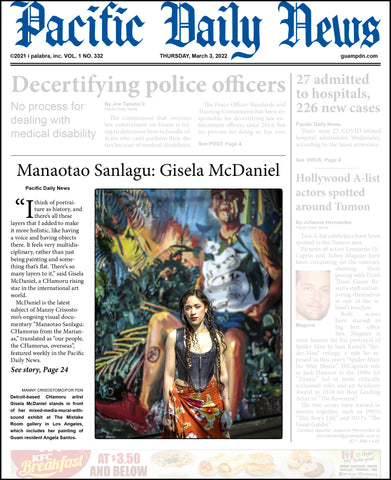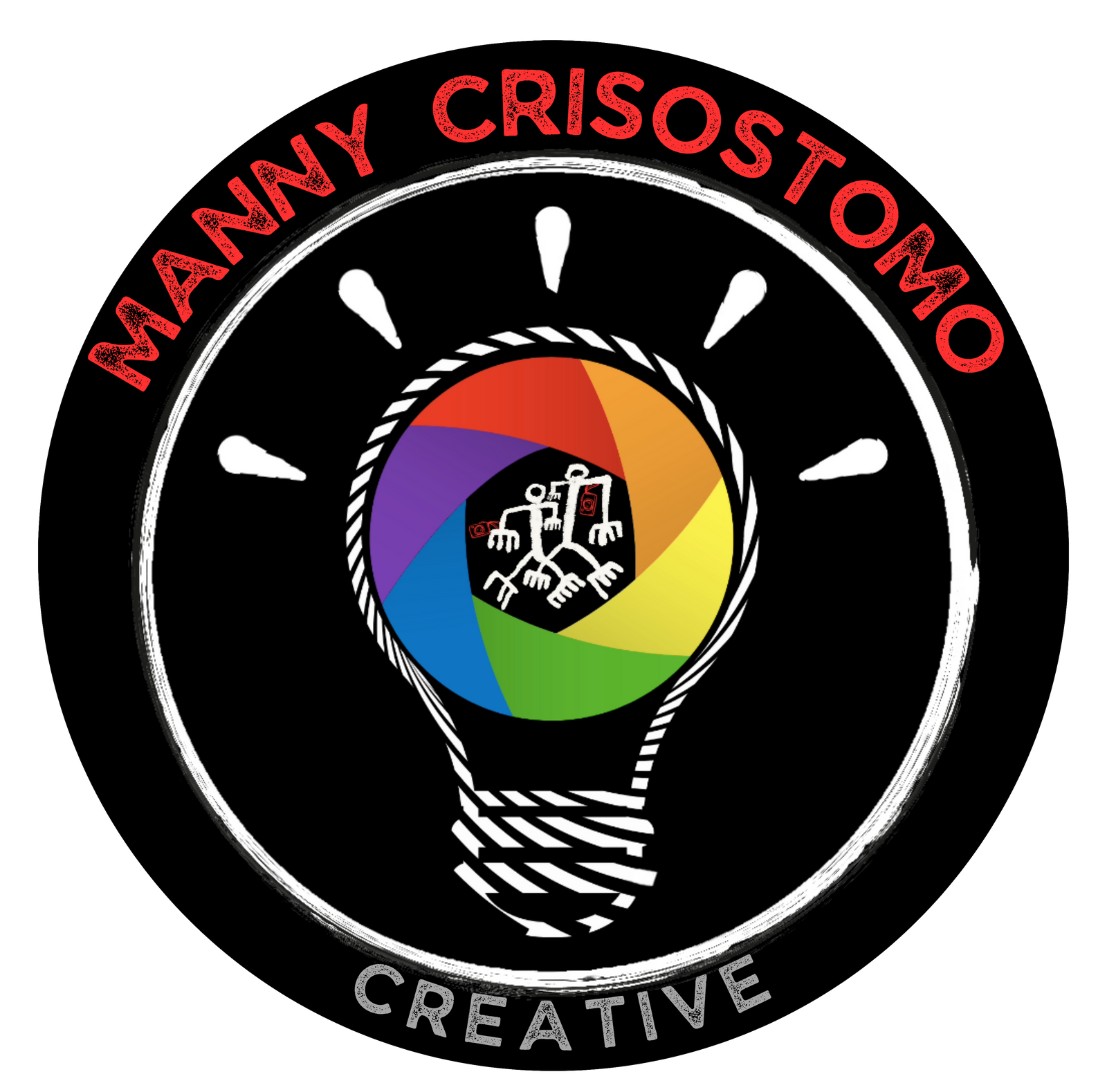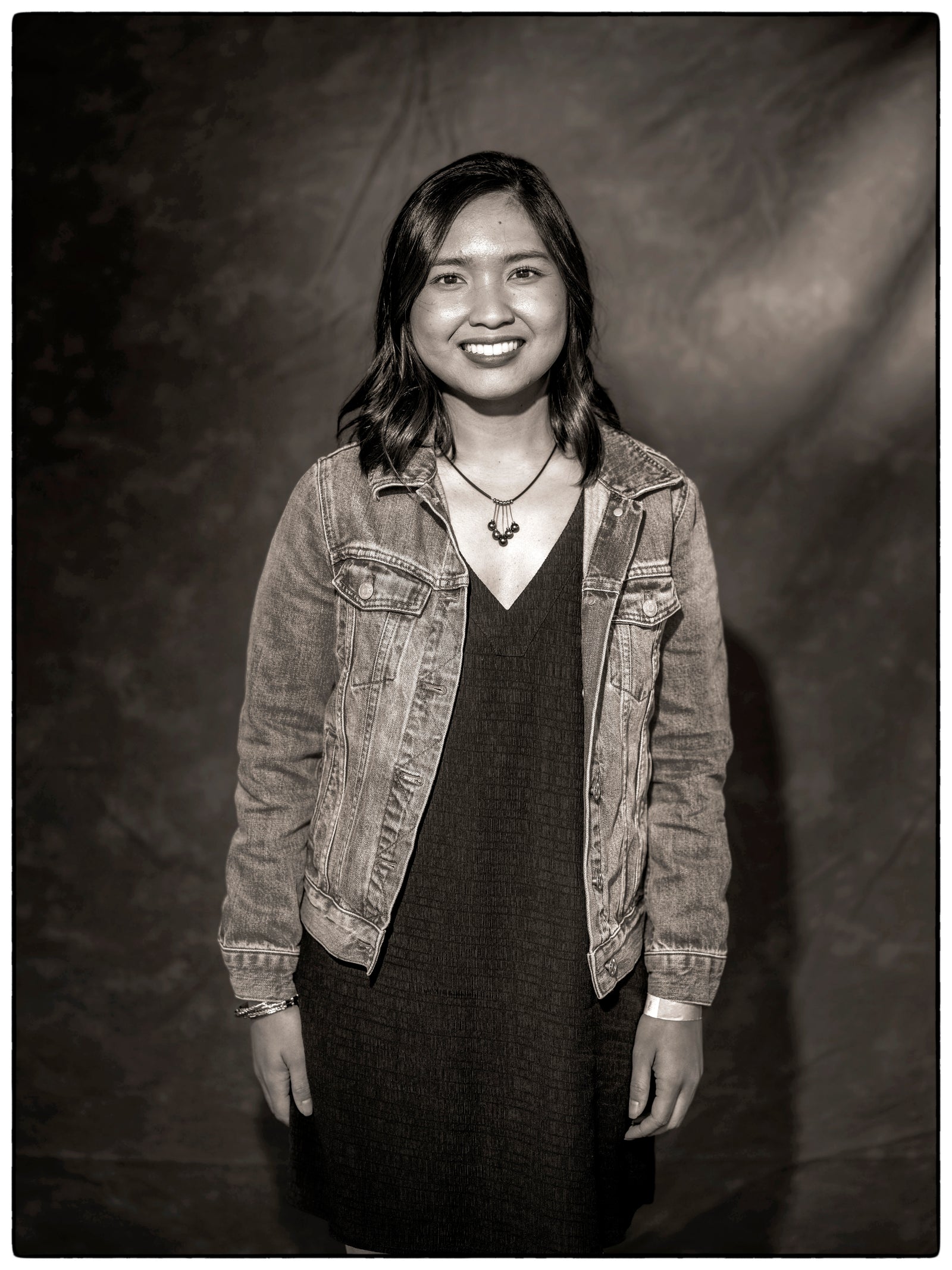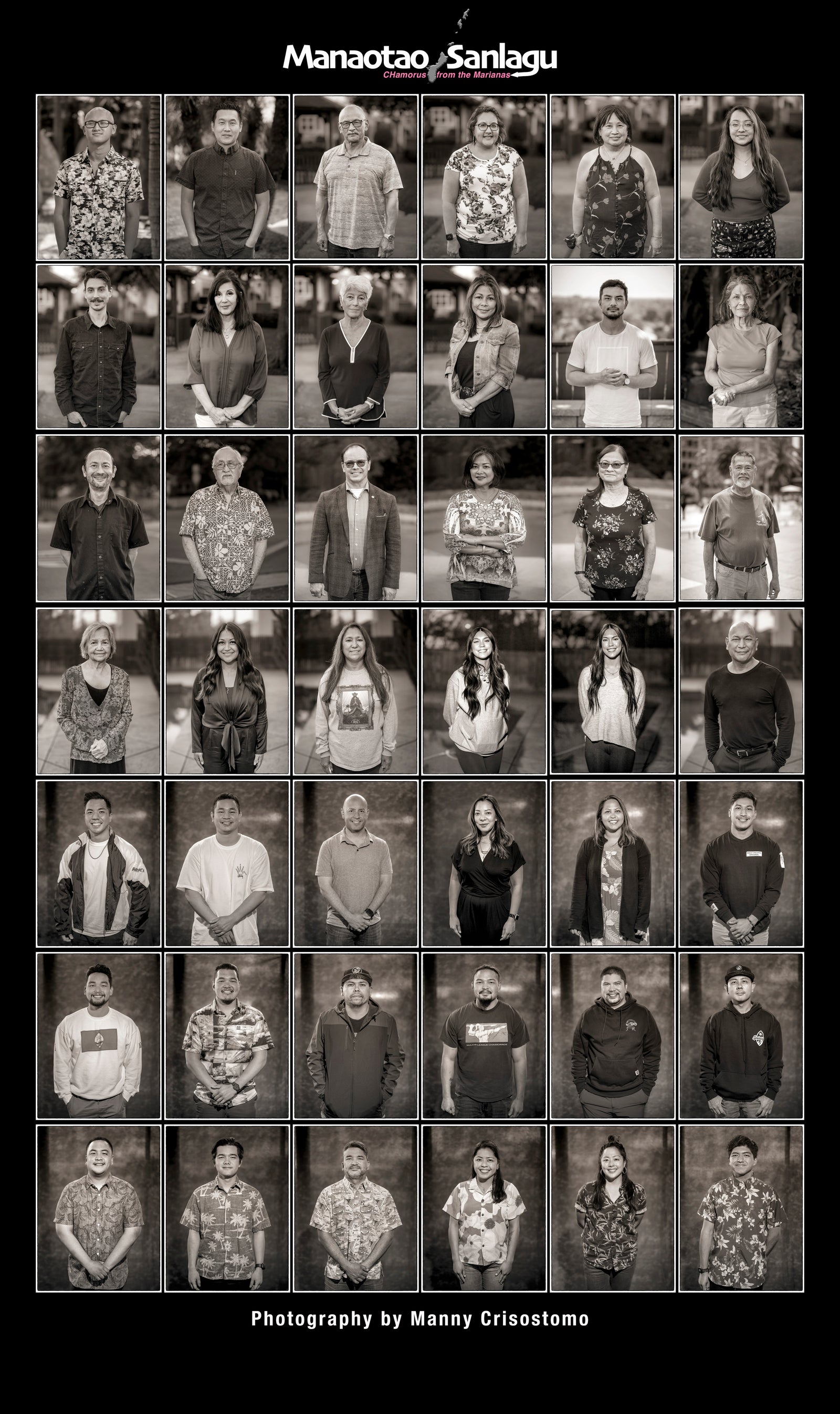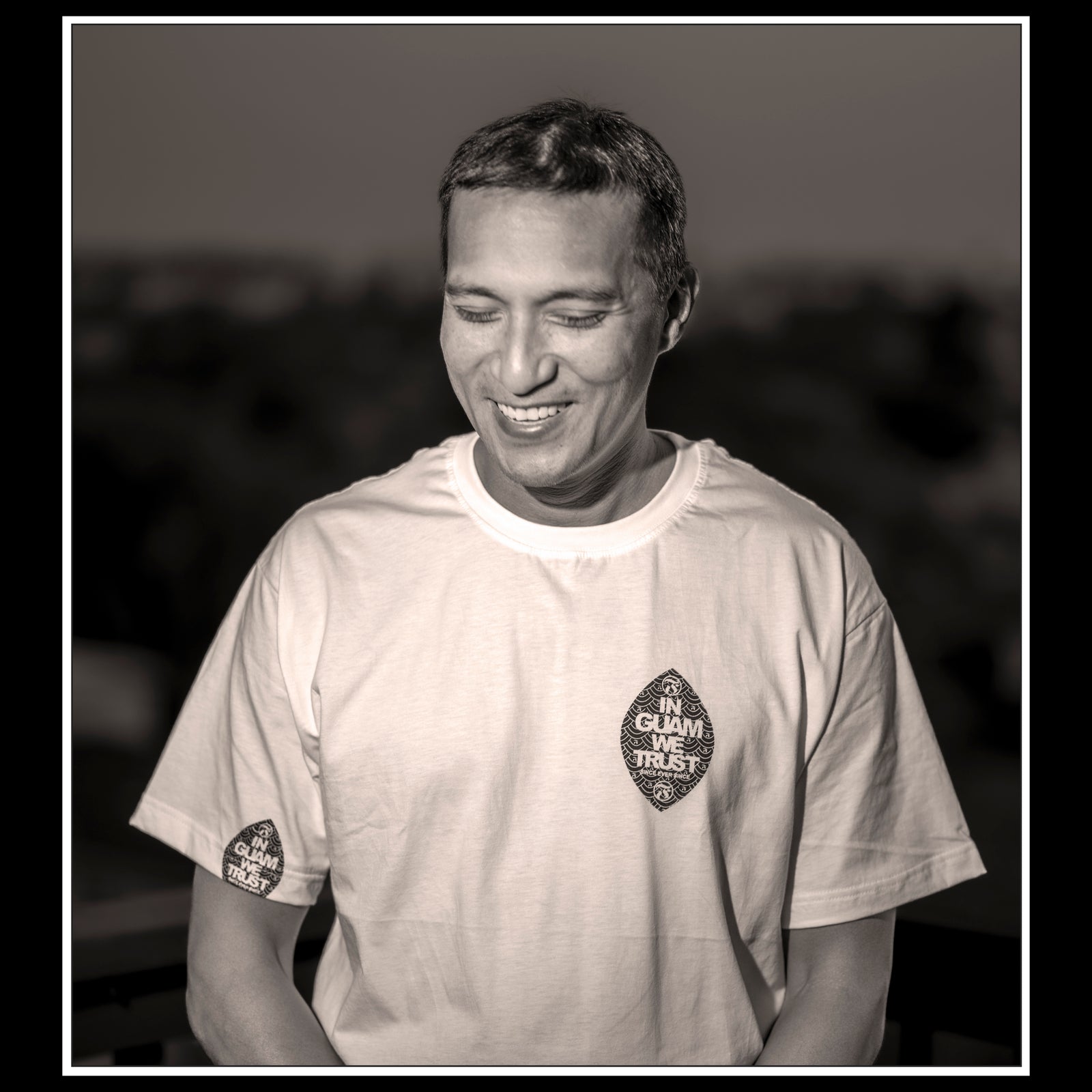By Manny Crisostomo
Artist Gisela McDaniel paints while wearing her heart on her sleeve, alchemizing the trauma and healing of her subjects - survivors of sexual violence, colonalism and racism - in three-dimensional, multifaceted works of art.
“When I make a painting, it's about who they are in a holistic sense. I'm celebrating that they exist, they are still here and have gone through things that could have eaten them up, but they didn't allow that to happen,” said McDaniel, herself a survivor of sexualized violence, and a Chamoru of mixed race growing up in the Midwest. “I'm really focused on giving somebody a peek into that, to share things we normally don't share. It's not shameful, it's not dark like that, it's just another layer of our existence, it's part of our experience.”

Her rich, colorful oil paintings, sometimes life-size, are embellished deconstructed personal items, such as a piece of prom dress, as well as jewelry, shells and other found items. And her “assemblages”are enhanced by audio, with the voices and stories of her subjects triggered by motion sensor technology.
“I think of portraiture as history, and there's all these layers that I added to make it more holistic, like having a voice and having objects there. It feels very multidisciplinary, rather than just being painting and something that's flat. There's so many layers to it,” she said.
The 26 year old McDaniel is considered a rising star in the international art world. Since getting her BFA from the University of Michigan in 2019 she has had solo and group shows in galleries and museums in London, Los Angeles, Miami, Detroit, Cleveland, Boston, Kansas City, Baltimore, Cincinnati and Dhaka, Bangladesh.
A growing roster of collectors — institutions and individuals - are purchasing her pieces, including former Walt Disney President Michael Ovitz.
“People are excited about the work,” she said. “I'm still in shock and I'm still processing that.” “Outside of CHamoru communities, for it to be really widely seen is really incredible, but it's very overwhelming.”
Despite being an art world sensation, she is grounded in the lessons and love of her CHamoru mother and grandparents.

“I think being raised by a sociologist definitely influenced me a lot. She was always interested in people and where they came from and their stories, and I think it just rubbed off on me sitting in her lectures when I was 4 years old,” she said of her mother, Antoinette Charfauros McDaniel, a Yale-trained sociologist, university professor and Chamoru scholar-activist living in Cleveland.
“When you're dealing with other people's stories, you don't want to mishandle that, and you want to treat it with care. That is something I received from my nana and tata, that care and respect. And all their values that were passed from them to me, that's something that's woven into my practice,” she said of her grandparents, Jesus “Chu” Quitugua Charfauros , familian Chunge’ of Barrigada, and Victoria Lujan Blas Charfauros, familian Capili of Tamuning. Her grandfather left Guam for the military and never returned, raising their five children first in Virginia and then San Diego.

Gisela McDaniel was born in Bellevue, Nebraska, but grew up most of her life in Ohio, where her father, Philip C. McDaniel is from. She has fond memories of summer and Christmas trips visiting her grandparents in their ranch style, three-bedroom, pink house with a small backyard on Daisy Place in San Diego.
“They're my favorite people in the world,” she said of her tata and nana, who were WWII survivors and active members of the Sons & Daughters of Guam Club in San Diego. “So I saw them as much as I could. They were so in love, they really loved each other and it was really wonderful to witness that. The best place to be is their house, which was filled with love and food.”

“The living room at their house, they had photos of every single grandkid framed on their wall and they had all their kids on the wall. You could tell they're really proud of all of us,” she added.
McDaniel remembered as a 10-year-old being at the Naval Base Coronado bowling alley and hearing her grandfather brag about her to all his bowling league buddies. “So tata was in a bowling league, and he and nana would always go,” she said. “Because I wasn't there (San Diego) as often, I would spend the whole time with them and they would drag me to the bowling alley and (I would) watch tata bowl. They'd be so proud of me and they'd be bragging about me and everybody's talking about their grandkids and competing with each other.”
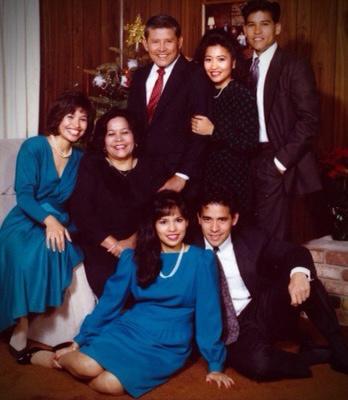
“And sometimes we bowl together and it's funny because I remember being really bad at it, like he had to put the bumpers up,” she added. “But ever since he passed, I've been really good at bowling. I don't really know what bowling scores are but I can throw a strike pretty easily and I definitely couldn't do that before.”
Her grandmother passed away five years ago, nine months after her grandfather died. “When he passed, we all went bowling as a family,” she said.
“There was a shift in my life where I did start being really proud of being CHamoru, when I think about all the things I learned from my grandmother and my aunties. Those are the knowledge I want to celebrate, it has shaped me into who I am. It's the values of my family. It's where I come from,” she said of the genesis of her latest solo exhibition, Manhaga Fu’una, which opened last month at the Pilar Corrias Gallery in London.

“I went into that show with the only focus and only controlling factor of it, was that every single person, except for one who was from American Samoa was from Guam (in the artwork),” as in everyone she said. “It was all people who either came to me or I was already friends with or my mother was friends with, it's all word of mouth. My only thing was somebody who was CHamoru in the diaspora.”

“It was a year of interviewing, and people sharing what they want to share. Then I find the similarities and I weave them together. It's really significant when people are expressing the same things over and over again, the same feelings, the same ways they're moving through things.”
“I'm glad that it's being widely recognized because that does spark a conversation. I do get to talk about Guam, in London, and on a global scale,” she said. “I'm asking people to acknowledge where we're coming from and what's going on. They don't get to just consume these paintings for free without learning something about Guam or knowing or engaging where this comes from, and the stories behind that.”
“I want to see Chamoru artists celebrated. I want to see our work out there because when we go to museums, there's nothing about Guam in there, and we deserve to be a part of that conversation. We deserve to be in these (museum) rooms.”
Gisela McDaniel is preparing new work for an exhibit this March in Miami before she heads to Guam in April for a monthlong artist residency. “I'm just hoping to do interviews and spend time with people,” she said. “I already contacted people that I've met to paint last time and didn't didn't end up getting the time. I'm really looking forward to going, and I'm gonna bring my mother, and we've never been together so this would be really special.”
This will be her second trip to the island; the first was a shortened trip due to the pandemic in the spring of 2020.
“I think it was just this longing I had because I had always really wanted to go to Guam. You know, I grew up hearing about it and hearing all these stories, and it was never something I could afford to do. My grandparents were quite sick for a few years, and it was something I always wished I had done with them and wasn't able to,” she said.
“I even had on the (airplane) descent into Guam a dream that my grandfather visited me. I woke up, crying and I felt like he was with me and that is what I'm supposed to do.”



